TWM Blog

Understanding Trading Terminology: A Simple Glossary for New Traders
Introduction
Trading often feels complicated not only because of numbers and charts, but also because of the words traders use every day. Terms like spread, stop loss, or volatility may sound technical, but they describe simple ideas that directly affect how trades are placed and managed.
This glossary is meant for beginners who want to understand the language of trading before they move on to more advanced concepts. Each term includes a short explanation and context so you can connect it to real situations you will see inside a professional trading software or any beginners platform. Learning this trading terminology will give you a stronger foundation to practice confidently.
Order-related terminology
Market Order
A market order is the simplest type of trade — it executes immediately at the current price. Traders use it when they need speed and certainty of execution, even if the final price differs slightly. Market orders are common when entering a fast-moving market or when ensuring an order is filled without delay in a downloadable trading platform.
Limit Order
A limit order allows a trader to define the exact price at which they want to buy or sell. The order will only be executed if the market reaches that price. This type of order gives more control over entry and exit but comes with the risk that it may never be filled if price moves in the opposite direction.
Stop Loss
A stop loss is a predefined order that automatically closes a trade once the market price reaches a chosen level against the trader. It acts as a safety net and protects trading capital from larger-than-expected losses. Even experienced traders rely on stop losses to manage uncertainty in volatile markets.
Take Profit
A take profit is the opposite of a stop loss. Instead of limiting losses, it locks in gains by closing a position once the price hits a target level. This order type helps traders secure profits without needing to constantly monitor charts.
Market data terminology
Bid and Ask Price
Every market has two prices: the bid, which is the highest price buyers are willing to pay, and the ask, which is the lowest price sellers will accept. The gap between them represents the cost of trading and is a key detail for anyone entering or exiting the market.
Spread
The spread is the difference between bid and ask prices. A tight spread usually indicates high trading activity and low transaction costs, while a wide spread often means the market is less active. Monitoring the spread is important when trading assets with lower liquidity.
Liquidity
Liquidity refers to how easily an asset can be bought or sold without causing big price changes. Markets like Bitcoin or large-cap stocks are highly liquid, while smaller assets may be illiquid, meaning even small trades can move prices significantly.
Volatility
Volatility describes the speed and size of price changes. High volatility markets often provide more opportunities but can also increase risks due to sudden swings. Low volatility markets are steadier, but usually offer fewer trading opportunities.
Slippage
Slippage happens when the final execution price of a trade is different from the expected price. It typically occurs during high volatility or when trading large positions in less liquid markets. Understanding slippage helps traders set realistic expectations when placing orders.
Strategy and analysis terminology
Indicators
Indicators are mathematical formulas applied to price and volume data to give traders additional insights. Examples include moving averages, Volatility Switch, Shadow Diver, QQE, and WilliamsR. Indicators highlight trends, momentum, or overbought/oversold conditions, and while they don’t predict the future, they help traders make structured decisions.
Strategies
A strategy is a planned method for entering and exiting trades. It can be as basic as “buy on breakout, sell on pullback,” or as advanced as algorithmic rules coded in C#. Many learners explore C# trading strategy development to design more advanced systems.
Validator Tool
The trading validator tool checks how a strategy would have performed in the past. It allows traders to see profit, loss, and drawdown statistics across different instruments and timeframes. By validating a strategy, traders reduce the chances of relying on untested or weak approaches.
Optimizer
The optimizer tests multiple versions of a strategy by adjusting parameters, such as indicator lengths or entry conditions. More advanced versions, like a walk forward optimizer tool, prevent overfitting by testing strategies on new sets of data after initial training.
Trade Simulator
A trade simulator lets traders practice using virtual funds instead of real money. It recreates the trading experience without financial risk, making it one of the best environments for beginners to experiment with order placement and risk management.
Conclusion
Trading terms like market order, spread, stop loss, and liquidity form the base of everyday decision-making in markets. Understanding them early gives new traders the confidence to navigate software, interpret market data, and gradually explore more advanced topics like indicators and strategies.
As you continue learning, keep this glossary as a reference. Over time, the terminology will become second nature, making the path from beginner to confident trader much smoother. Whether you use a professional trading software or practice in a demo trading platform, these terms remain universal.
Ready to put these terms into practice? Download our professional trading software and start in the built-in demo trading platform to learn risk-free.